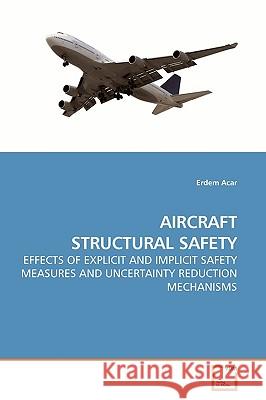Aircraft Structural Safety » książka
Aircraft Structural Safety
ISBN-13: 9783639193398 / Angielski / Miękka / 2009 / 308 str.
Aircraft structural safety is achieved by designing the structures against uncertainty and by taking steps to reduce the uncertainty. Safety factors and knockdown factors are examples of measures used to compensate for uncertainty during the design process. Uncertainty reduction mechanisms (URMs), on the other hand, may be employed during the design process or later on throughout the operational lifetime. Examples of URMs for aircraft structural systems include structural testing, quality control, inspection, health monitoring, maintenance, and improved structural analysis and failure modeling. This book presents a thorough analysis of the effectiveness of structural safety measures and their interaction. In addition, resource allocation comparison for reducing uncertainties versus for designing heavier structures for the given uncertainties is presented.
Aircraft structural safety is achieved by designing the structures against uncertainty and by taking steps to reduce the uncertainty. Safety factors and knockdown factors are examples of measures used to compensate for uncertainty during the design process. Uncertainty reduction mechanisms (URMs), on the other hand, may be employed during the design process or later on throughout the operational lifetime. Examples of URMs for aircraft structural systems include structural testing, quality control, inspection, health monitoring, maintenance, and improved structural analysis and failure modeling. This book presents a thorough analysis of the effectiveness of structural safety measures and their interaction. In addition, resource allocation comparison for reducing uncertainties versus for designing heavier structures for the given uncertainties is presented.











